


Charles Partleton (1839-1916)
Part III
This page is a continuation of the story of Charles Partleton (1839-1916). Click here to go back to Part II.
To summarise the story so far, Charles Partleton was born in 1839 into extreme poverty in the area of Drury Lane in London. In 1847, his family relocates to a new slum dwelling, Crookets Alley, on the Lambeth Thames foreshore.
Between 1851 and 1860, the family moved about 50 yards from Crookets Alley to another crumbling residence on Broad Street, but Charles is about to move much further:
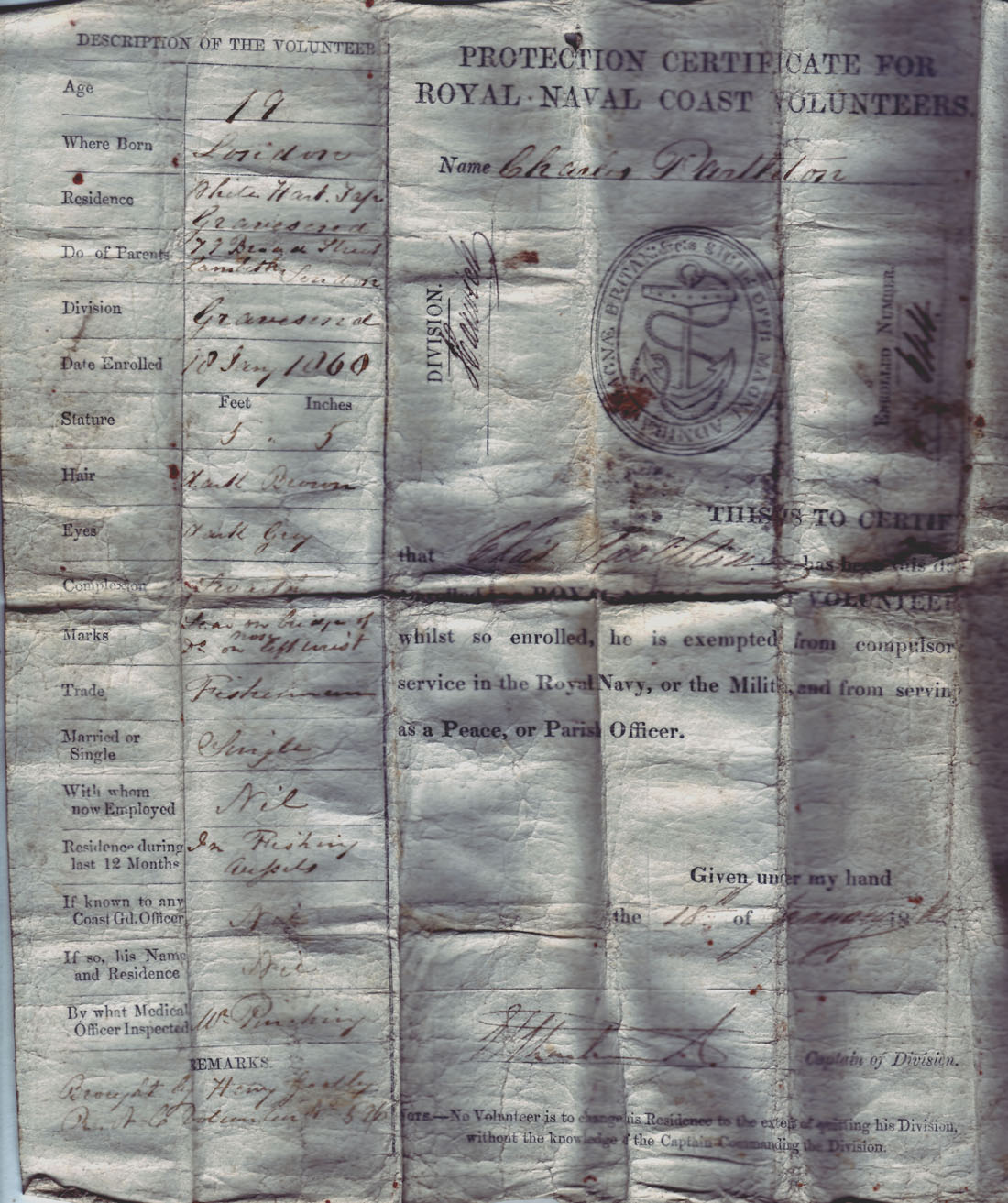
This is indeed a rarity. An original document which survives intact from Victorian times. This comes courtesy of Ceridwen Davies whose husband Richard Tanguy is descended from our Charles' twin brother Benjamin.
The year is 1860. Charles has signed up for the Royal Naval Coast Volunteers, which will bring in some much-needed cash.
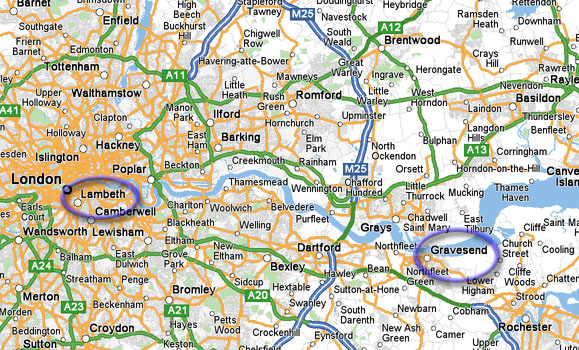
The Royal Naval Coast Volunteers were the second national reserve force to be formed in Britain, being created by act of parliament in 1853. This force was comprised of up to 10,000 seafaring men around the UK who could be called upon to serve in the Royal Navy in case of war, but who could not be sent anywhere beyond 100 leagues (300 miles) outside the shores of the United Kingdom.
So, let's go back and have a close look at Charles' certificate. There are a couple of statements which don't bear close scrutiny. For example, he declares his trade to be "Fisherman", which no doubt helps his case for being accepted into the Naval Reserves... but we should be very surprised if this were the case. Charles was brought up on the industrial banks of the Thames, miles from the sea. Though there's still fishing in this polluted Victorian river, I expect the only boat he's been on is the Lambeth Ferry.
Charles is 5 feet 5 inches with brown hair, grey eyes and a scar on the bridge of his nose.
His parents' address is given as 79 Broad Street Lambeth, but his own address is given as 'White Hart Yard', which is on Gravesend's steep High Street. The buildings are still there and have been recently refurbished; below is how White Hart Yard looks today. It's not clear how long Charles was at White Hart Yard, but it was probably not very long, and was probably just an address of convenience:

The Royal Naval Coast Volunteers were trained and drilled by the Coastguard, and skills were taught in seamanship, gunnery, and the use of arms both afloat and ashore. The volunteers had a commitment for no more than 28 days under training in any one year. Volunteers served for a period of five years.
The inducement of cash for joining created unforeseen problems when volunteers signed up simultaneously for other reserve forces and militias in the area and took the cash from them all. A warning against this practice was printed in The Illustrated London News on 15 September 1855: Notices have been issued, warning men who belong to the Royal Naval Coast Volunteers not to enlist in the Regiments of the Line, the Militia, or the East India Company's service, as they will thereby render themselves liable to imprisonment for six months.
Charles' training finished at the end of the year in December 1860, though there may be more training to come in later years.
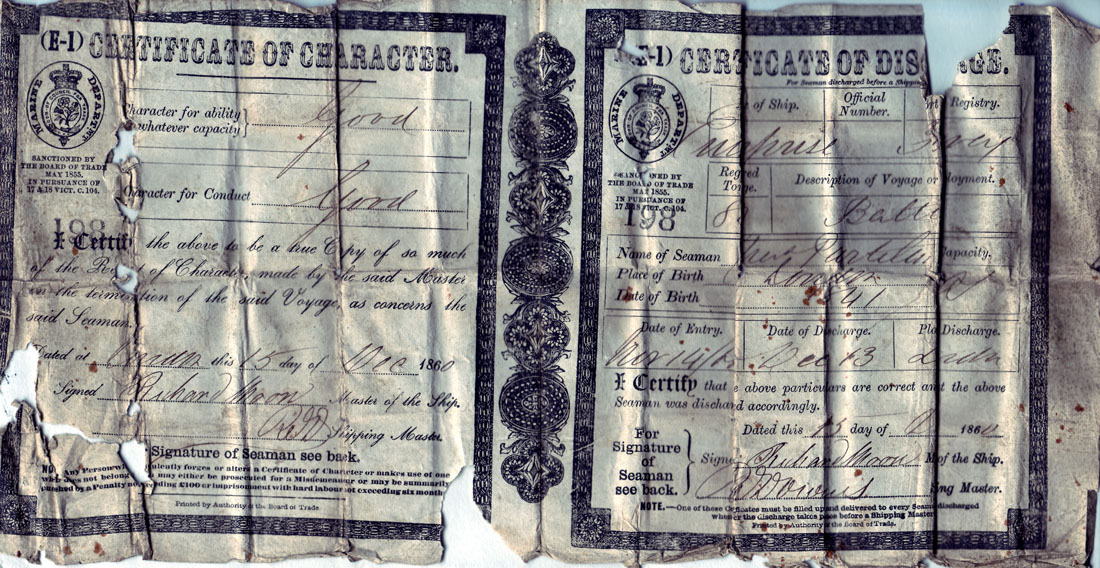
Above we see Charles' discharge papers of 15 December 1860. His ship was apparently The Enterprise (any Star Trek fans out there?!) - if I am reading this correctly between the folds in the paper. The description of the voyage is given as "Battle", but I don't know how to interpret this. It's not an actual battle; The Royal Naval Coast Volunteers were never called in to active service, and the force was disbanded in 1873.
I've since had a suggestion from Terry Partleton that the voyage description might say Baltic & I think that could well be correct, even if its more than 300 miles!
Less than six months after his discharge, we find our Charles back with his mum and dad. Step into his shoes:
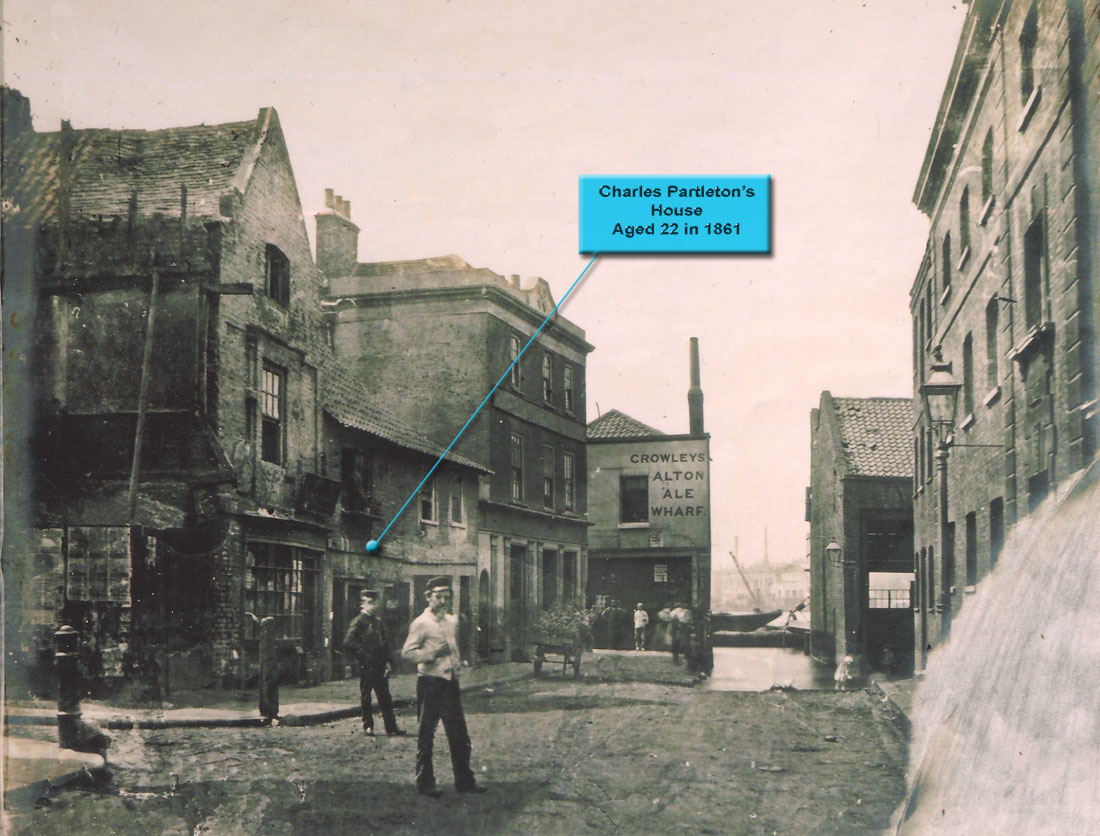
The above photograph, a stunning encapsulation of a moment in time, in which we see Charles' actual house, was taken in the 1860s. They are living at No 79 Broad Street, shaded pale blue in the map below, the photographer pointing his camera towards the Thames.
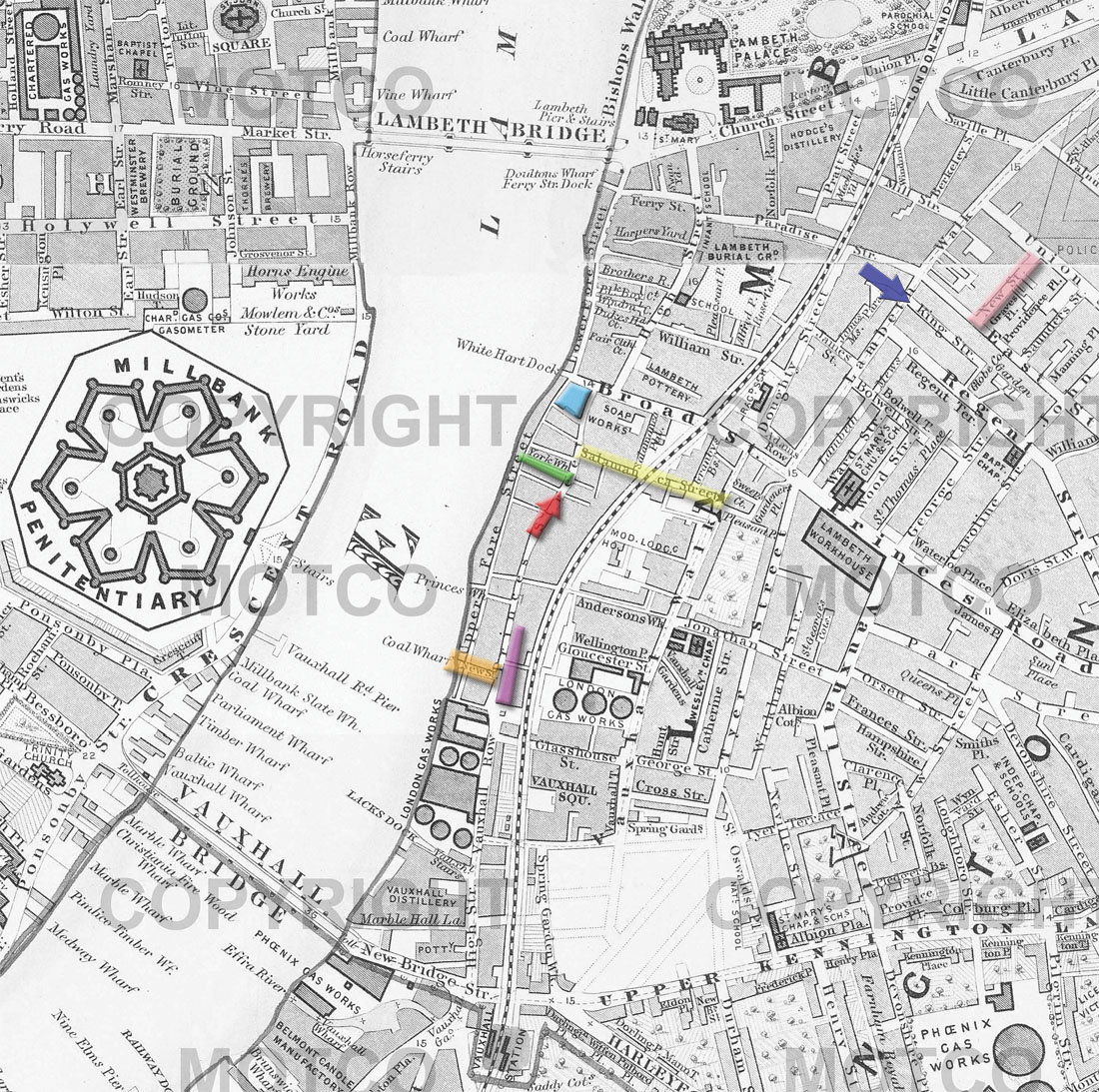
And here's the family in the 1861 census:

Note from the 1861 census record that Charles is no longer claiming to be a "fisherman"!
Now we are here, we should take a little time to have a look around the neighbourhood, and since we are moving south, and time is moving on, we'll use a map of 1862. Unfortunately, this map is rather less detailed than that of 1799, but things are changing. One thing to note is that we see Crookets Alley, though Charles no longer lives there, under another of its aliases; it is labelled Dukes Head Court in this map.
Charles is now 21. He's still living with his parents. Their residence on Broad Street is in the pale blue shaded area:

Just around the corner, shaded yellow, is Salamanca Street, where we find Gunner's Cottages (Photo c1910):

Gunner's Cottages are a typical Victorian Court, accessible only via a yard though a wooden door from the street.
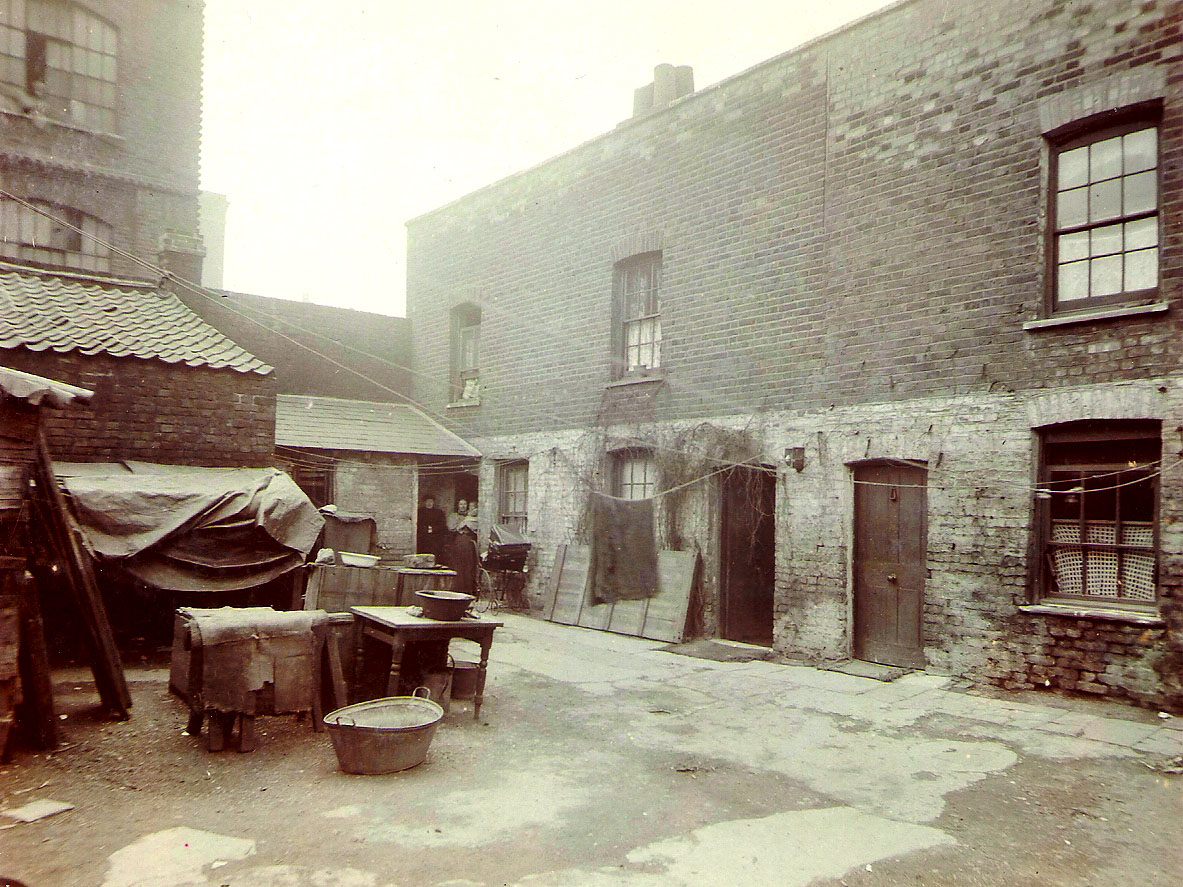
Here's an interesting story about Gunner's Cottages, described in his own fair hand by Charles Booth who visited them in 1892-1898:

Mr Booth was researching his famous Poverty Map of London & I can decode some of the shorthand:
"Gunner's Cottages: entered through swing wooden door: dark blue to light blue, [colour guides indicating very poor / poor areas in his map]. Four 2-storey cottages, used to be tenanted by notorious dog-stealer. On his death, 50 dogs were found concealed in the yard."
It's hard to imagine how you could hide 50 stolen dogs without someone hearing the yapping!

Further south we find York Wharf; this photograph a stunning study of the poverty of the area in 1866:
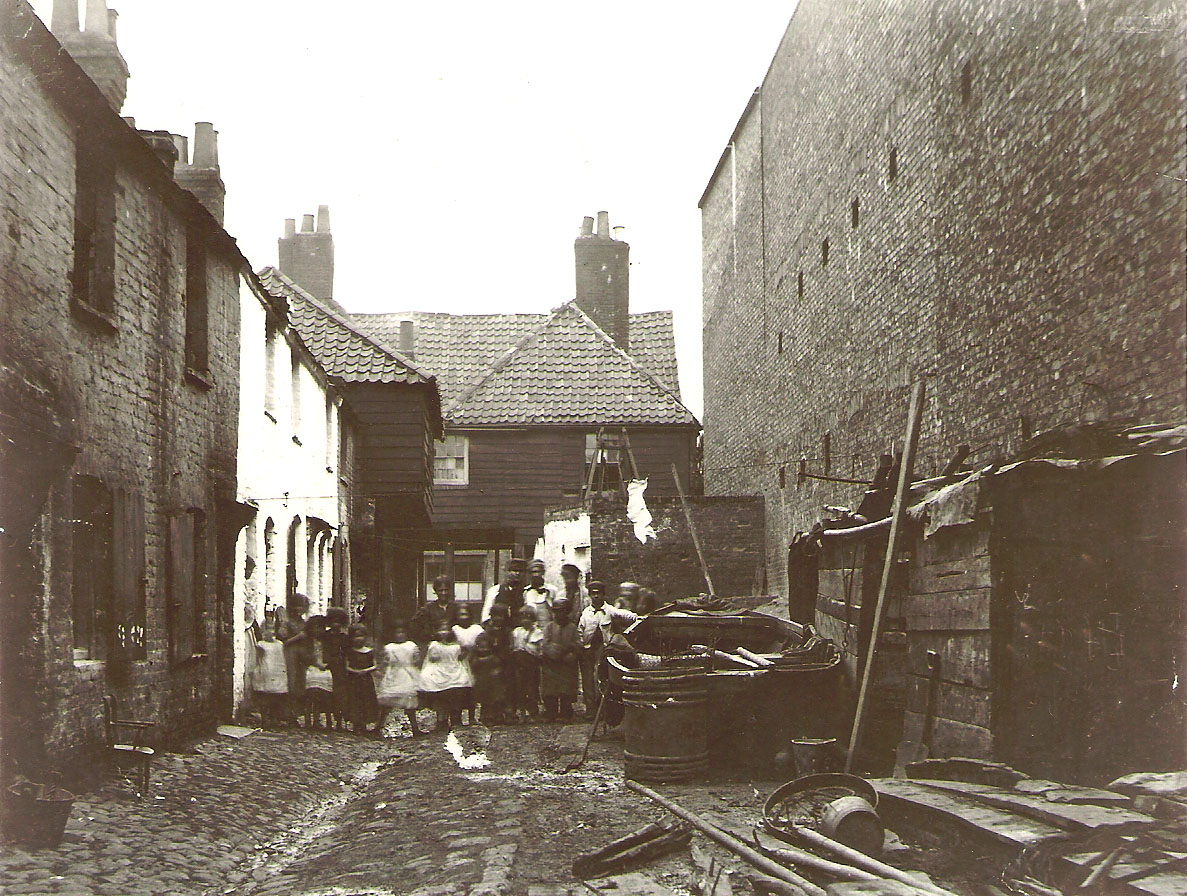

Here's where this picture was taken, all those years ago, shaded green in the map below:

In the next photograph we are looking north up Princes Street from the viewpoint of the red arrow in the map above. On the right is the Old Red Cow pub. Assuming our Charles - a labourer and seaman - liked a pint, then surely he's been in there... it's only 30 yards from his front door. Maybe he knew the barmen:

On the west side of Princes Street from the same viewpoint, we see yet another pottery, Henry Millichamp's drainpipe works. Check out those faces! The boy is barefoot.
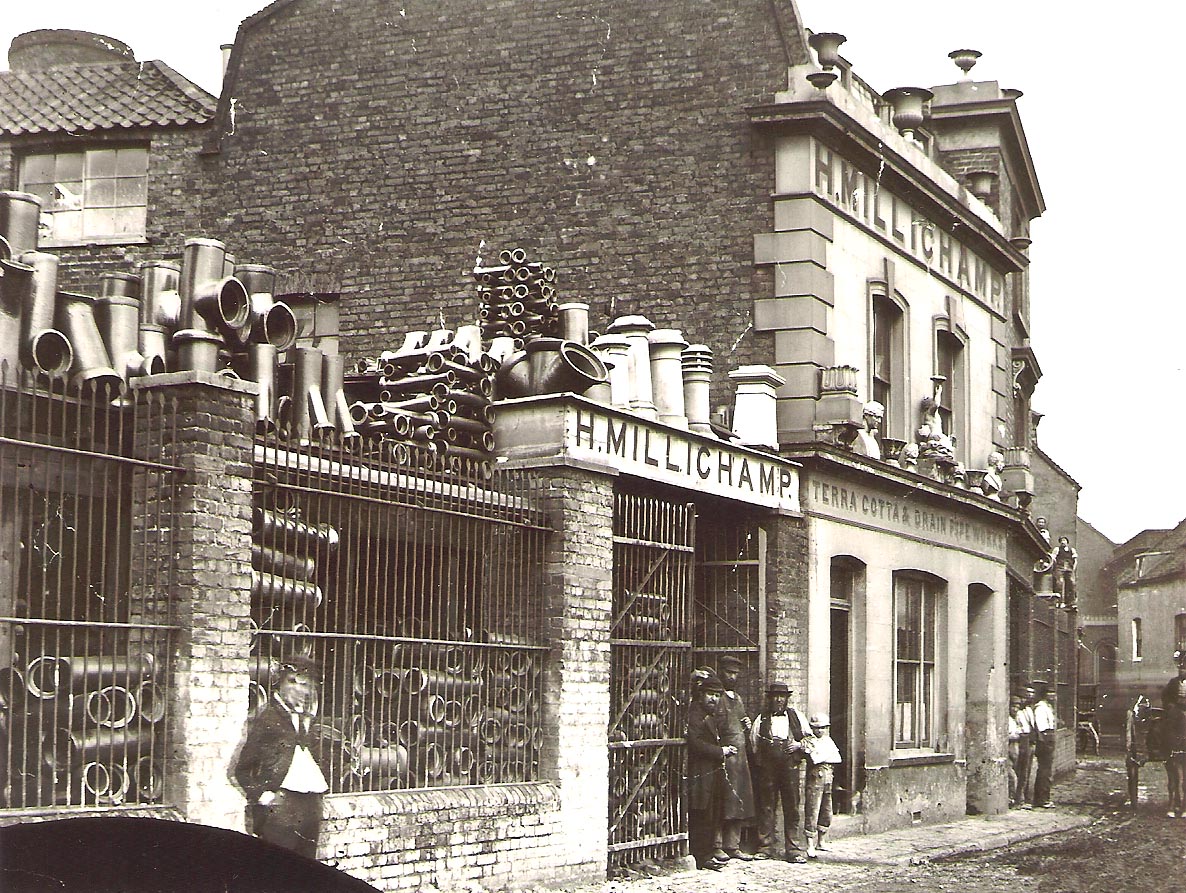
The house north of the Old Red Cow is visible in both of the above photos, so we can paste the two pictures together and make a really nice montage of Princes Street... Step into their shoes!
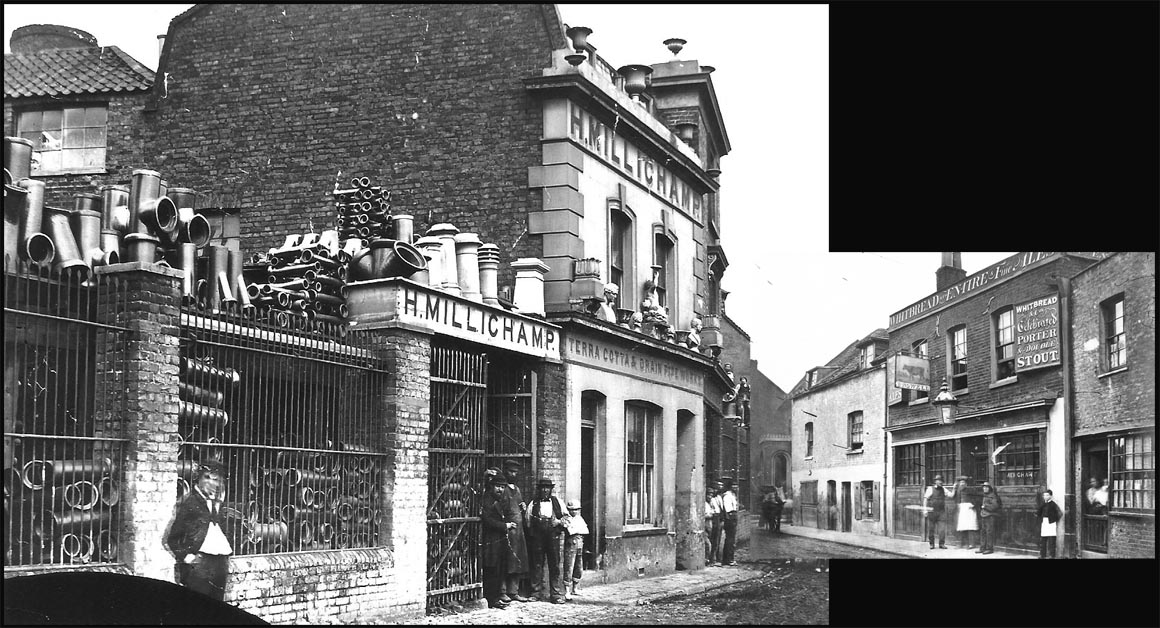
When the Albert Embankment came along, much of the west side of Princes Street was totally obliterated. Below I have overlaid a modern map on top of the 1862 map:

From the above, we can see that the whole of Upper Fore Street is now under the Thames!
So, let's have a little diversion to look at what was lost. Below we see Upper Fore Street in 1828:
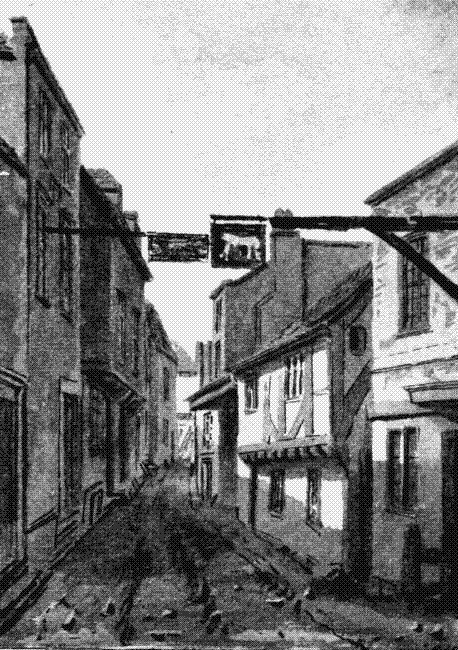
"Aaaaw, cute", I hear you say, and here's another artist's impression of a different stretch of Fore Street of 1830:
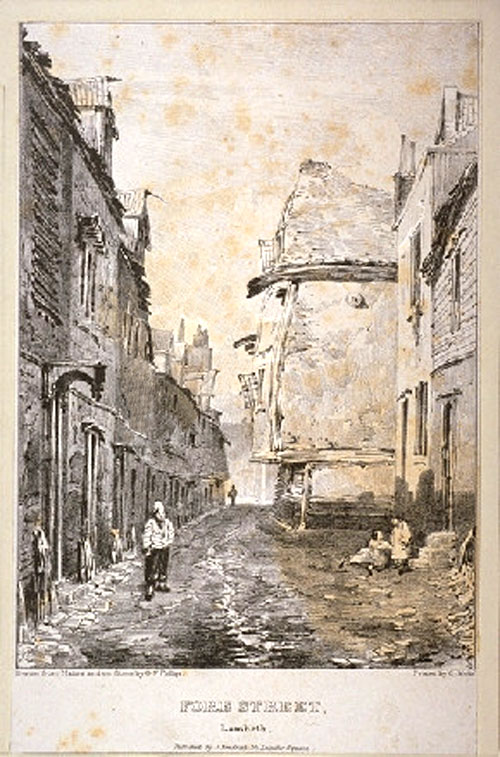
Mmmm, not so sure now - is that an open drain running down the middle of the street? Why, yes, it is.
And as we see the increasing industrialisation of Lambeth, here's an Alley running between Fore Street and Princes Street in the 1860s:

Much of the north end of Princes Street, which dog-legs inland, survived the Albert Embankment, including the Old Red Cow pub which we saw earlier.

Here's a photograph of Beet Court aka Lemon Court, circled in blue in the map above, in 1910:

And let's have a look at the Albert Embankment now, looking north with Parliament peeking through the trees:

The photo above is taken from the viewpoint of the red arrow in the map below. The Old Red Cow may have survived the Albert Embankment, but it couldn't last for ever. It's long gone, and is presently under the shiny office block on the right.

By 1871, Charles, now 32, is still living with his mum and dad. The family have moved a few hundred yards further south down Princes Street. But it is Princes Street no more - their address in the 1871 census is of course, Albert Embankment.
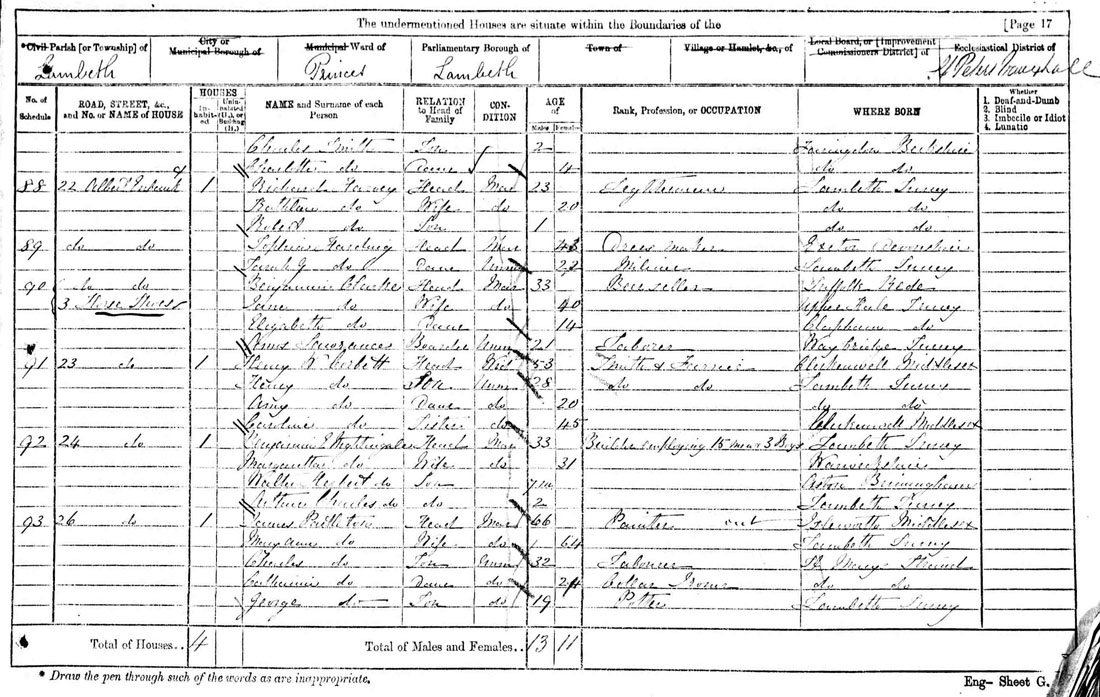
I'll take this opportunity to give credit to Ancestry.co.uk who provided the above census and other original records in this web page. If you're inspired by this website to seek out your own British ancestors as I have done, click here.
Some of the old houses in the east side of Princes Street have survived and now form part of the renamed Albert Embankment. The approximate location of Charles' house, near the gasworks, is shaded purple in the old 1862 map.

Charles is now 32 and still living at home with his mum & dad.
Charles' kid brother George, who had been born in Crookets Alley, is also living at home. The census took place on 02 April 1871. On 26 November 1871, George died at the newly-relocated St Thomas's Hospital, which, incidentally, was built on part of the Thames reclaimed as land as part of the Albert Embankment in 1868.
I find this interesting because in an era long before the National Health Service, George was accepted free of charge into the newest and best hospital in London. We can be quite certain that he hasn't really got any money to pay for doctors, but below [an appeal from the year 1931] we see how this was possible:

Thanks to Terry Partleton for this certificate and indeed for all the birth, marriage and death certificates in these pages. Here's George's cause of death; at age 19 he seems very young to be dying of heart and kidney disease:

Just over a year later in the January quarter of 1873, both of Charles' parents, James Partleton and Mary Ann Garrad - who have frankly encountered more than their fair share of tragedy in their lives - died in Lambeth, within a few weeks of each other. James was 67 and Mary Ann was 64.
At some time between 1872 and 1875, Charles marries. We say 'marries' but actually we can't find a wedding in the records - very unusual. In actuality, it seems Charles and his new wife are living together in a common-law arrangement.
Charles' wife is Charlotte Jane Arnold nee Barnes. Charlotte is a widow with four children, whose first husband, taxidermist and bird-shop keeper John A Arnold - fully 25 years older than she - had recently died.
On 18 February 1876 Charlotte gave birth to Charles' first child, Catherine Charlotte Partleton at King Street off Lambeth Walk.

Let's see the map again. King Street is identified by the dark blue arrow, which is the viewpoint of our photographer in the picture below the map:

Quite incredibly, for the fourth time in his life, we have a picture of the exact house where Charles Partleton was living; take your pick - it's one of those in the picture below! We are not in the luxury housing market here. The photograph (of 1938) below has recently been positively identified as King Street, (it was later renamed as Wake Street in the 1880s). The building at the end is Lollard Street School, destroyed by bombing in WW2. All of this is now gone:
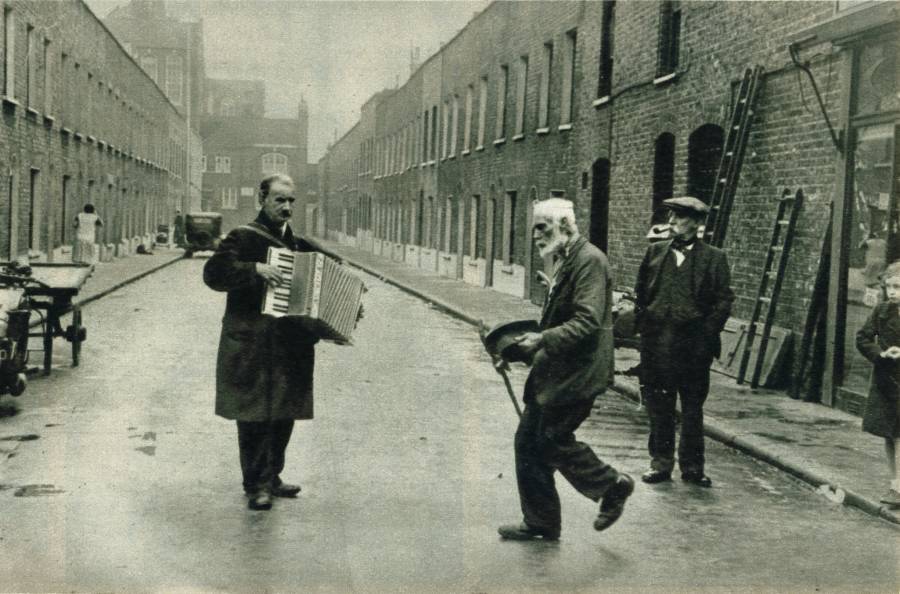
This one is also King Street:

And a back yard in the neighbourhood. Just about enough room to swing a cat. In this case they have a dog, if you look carefully:
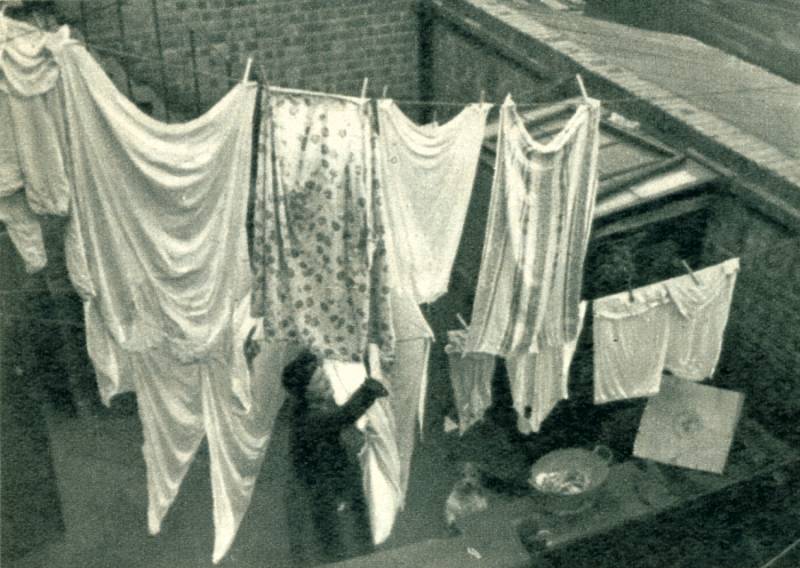
The photographs come from Picture Post magazine of 31 December 1938. In this last one we get a peek inside one of these houses:
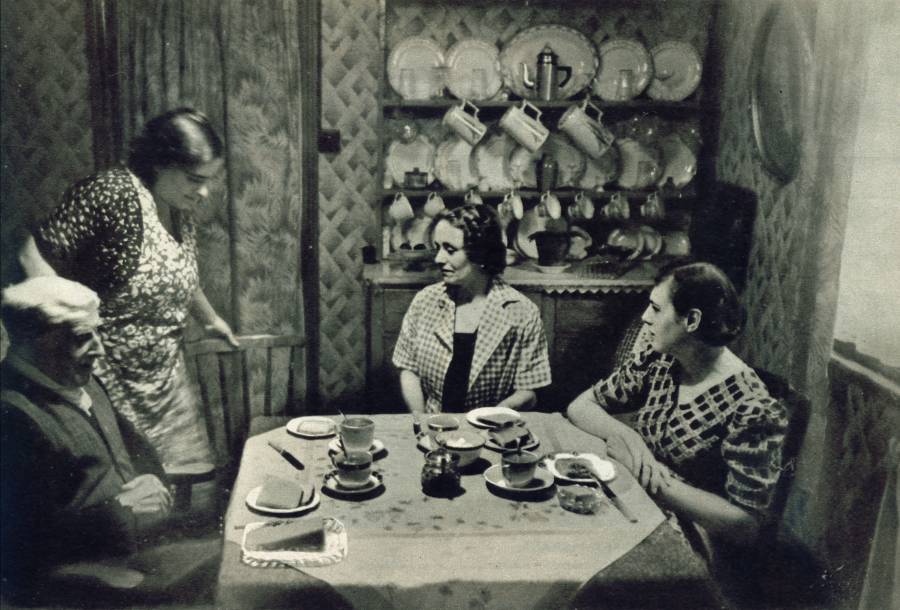
Here's what Picture Post has to say about the photograph above:
"Mrs. Barber lives in Lollard Street, off Lambeth Walk. Left is Mrs. Barber's 88-year-old father, who sells straw-bags in Lambeth Walk on Fridays and Saturdays, if fine. Right is her daughter. A cup of cocoa is their morning custom."
Let's get back to our Charles. While living at King Street, in the July quarter of 1880, Charlotte gives birth to another girl, Charlotte Mary. Sadly this baby dies aged approximately 6 months in the first quarter 1881, cause unknown.
The next event is the 1881 census which took place just a few weeks after the baby's death, on 03 April. Charles and Charlotte are no doubt still grieving. The family are still at 43 King Street, though they don't occupy the whole house, sharing it with 60-year-old widow Charlotte Kent:

Above we see the family, including Catherine aged 5 who is carelessly dittoed as Catherine Arnold "step daughter", even though she was born and registered as Catherine Partleton, and is Charles' natural daughter.
The Partleton's neighbour, Eliza Bart, is, in a rather discompassionate Victorian way, listed as a 'lunatic'.
The photo below was taken standing in Lambeth Walk. The junction ahead is King Street... Ok, the picture is from the 1950s; it's 75 years after Charles lived there, but it would be very familiar to him, I'm sure.

We are looking from a few yards north of the blue arrow:

Moving on three more years: in Victorian times, fate often carries nasty surprises. In April 1884, little Catherine Partleton, aged 8, Charles' only natural child, dies in Lambeth. Cause unknown at present.
Charles' stepson Henry Charles Russell Arnold (b July 1871) later in life marries his step-cousin Mary Louisa Partleton (b 15 October 1871), though of course they are not blood-relatives.
The next we see of Charles is the 1891 census:
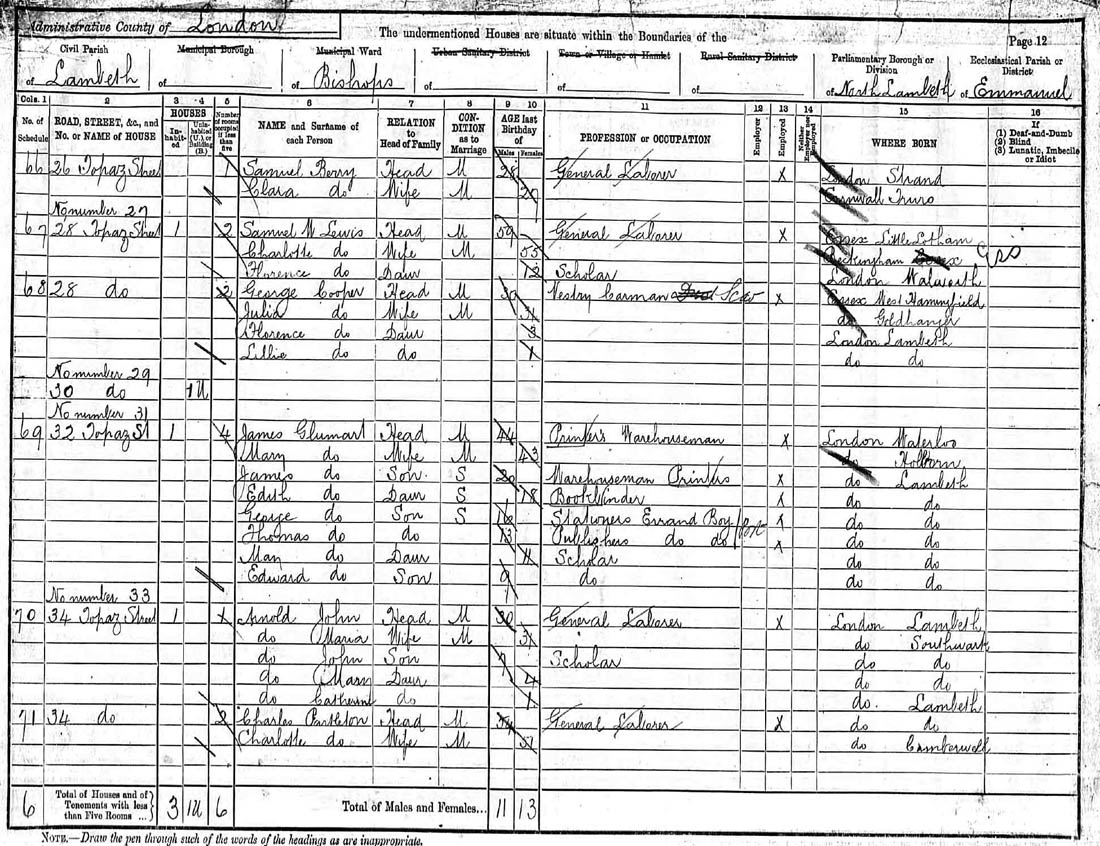
Charles and Charlotte have moved a few yards to Topaz Street, highlighted pink in the map. It is named New Street in the 1862 map below, but the Victorians quite rightly had a thoroughgoing programme of renaming streets in the late 1800s to eradicate duplication and ambiguity in London street names. Thus 'New Street', of which there must have been hundreds, became Topaz Street before 1891.
Charles and Charlotte are sharing No 34 with stepson John Arnold who is now married with a family of his own.

In the 1901 census, we find Charles and Charlotte have moved to Camberwell. They are looking after their 11-year-old grand-daughter Catherine who had been a 1-year-old in their shared house in 1891:
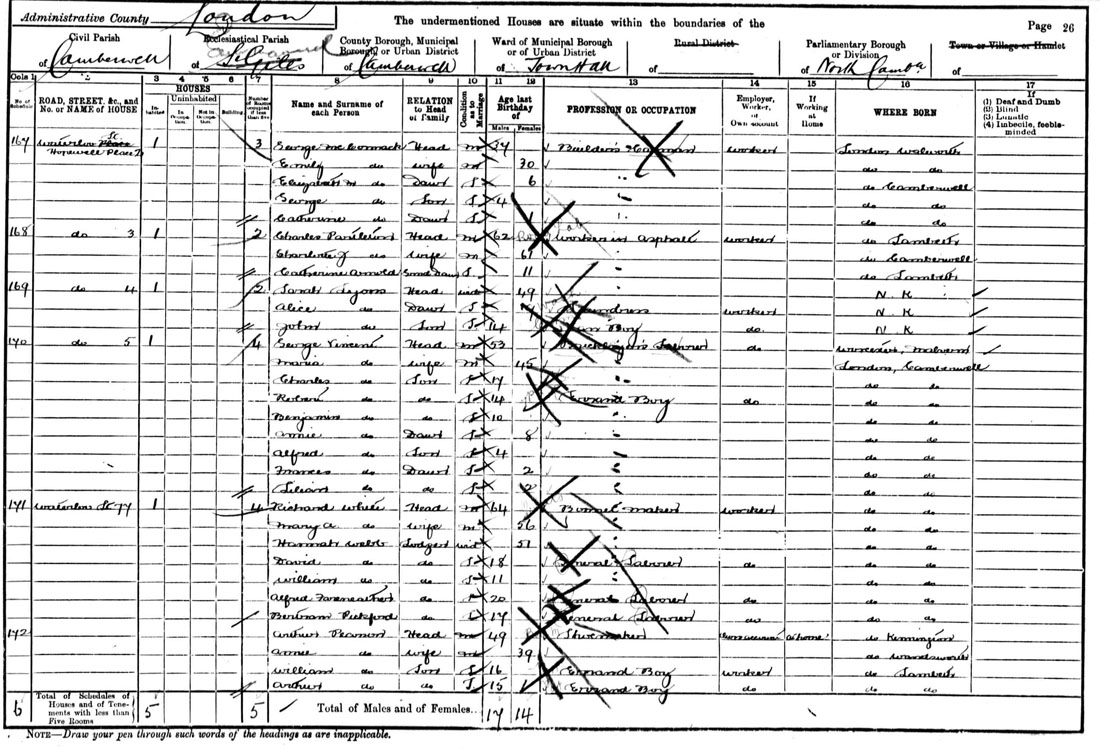
Charles is still labouring at age 62. Above we see specifically that he is working on the roads, laying asphalt.
Camberwell is off the Lambeth map, a few miles to the south east, but for those of you who know South London, his address at Waterloo Street leads directly off of the northeast corner of Camberwell Green, seen here at about the same time Charles is living there. Note from the mud that Charles hasn't asphalted it yet!

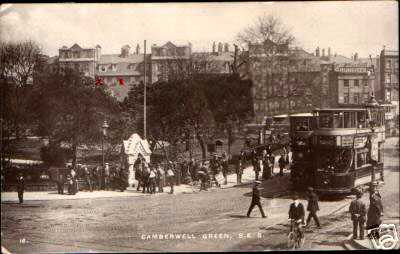
And so we move to 1911, when the census records end, for the time being.
Charles' twin brother Benjamin died in Lambeth in 1910. All of Charles' eight brothers and sisters are now dead with the possible exception of his sister Catherine (b 1843) who was still alive in 1904 for her third marriage.
Charles is a survivor and lives to a surprisingly old age of 77, passing away in 1916 in Camberwell. He's seen a lot of death through the whole of his life, even when he was just a child; brothers, sisters and his own two children. His wife Charlotte died a year later, in 1917, in Camberwell, also aged 77.
If you enjoyed reading this page, you are invited to 'Like' us on Facebook. Or click on the Twitter button and follow us, and we'll let you know whenever a new page is added to the Partleton Tree:
Do YOU know any more to add to this web page?... or would you like to discuss any of the history... or if you have any observations or comments... all information is always welcome so why not send us an email to partleton@yahoo.co.uk
Click here to return to the Partleton Tree 'In Their Shoes' Page.
